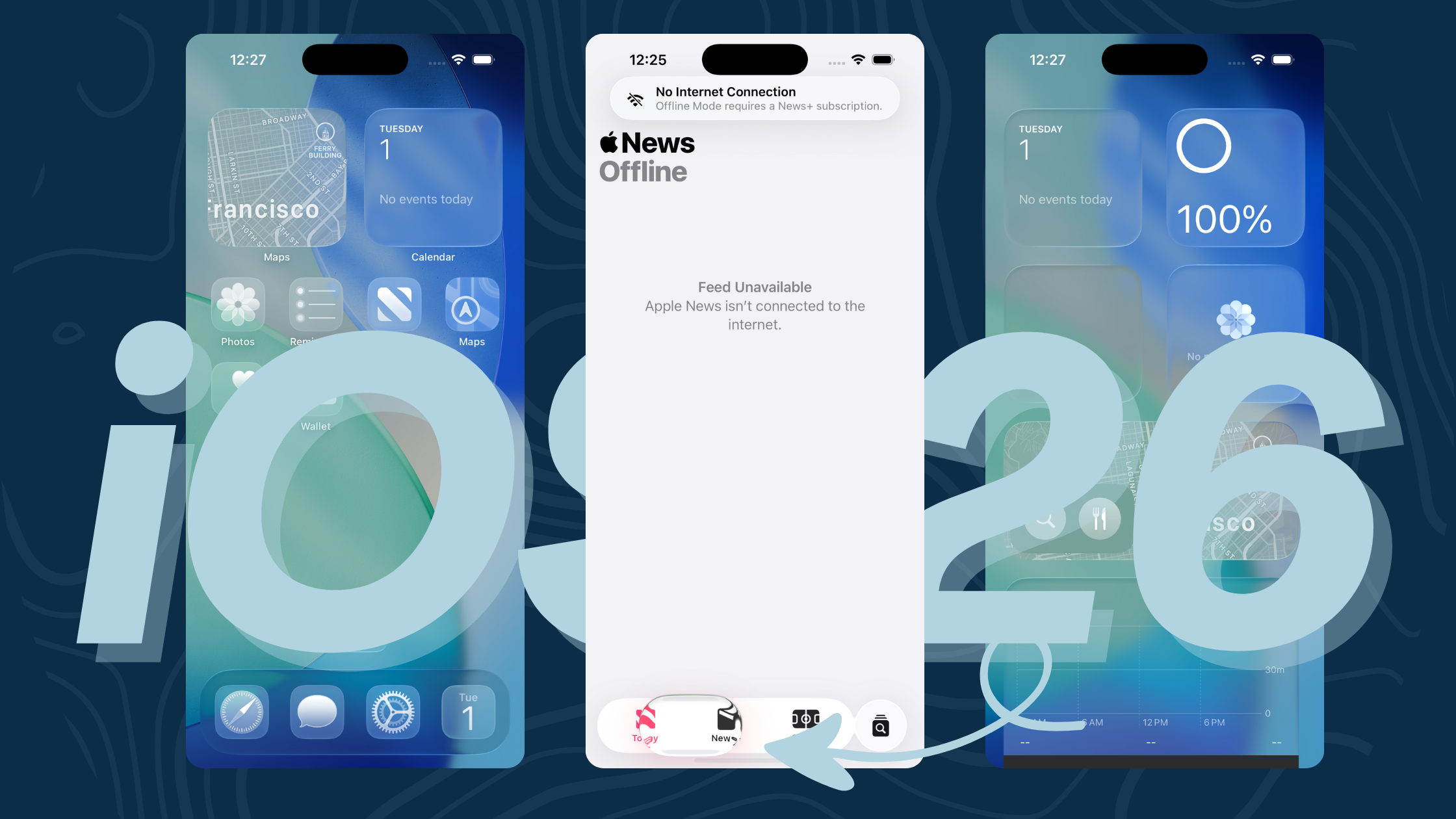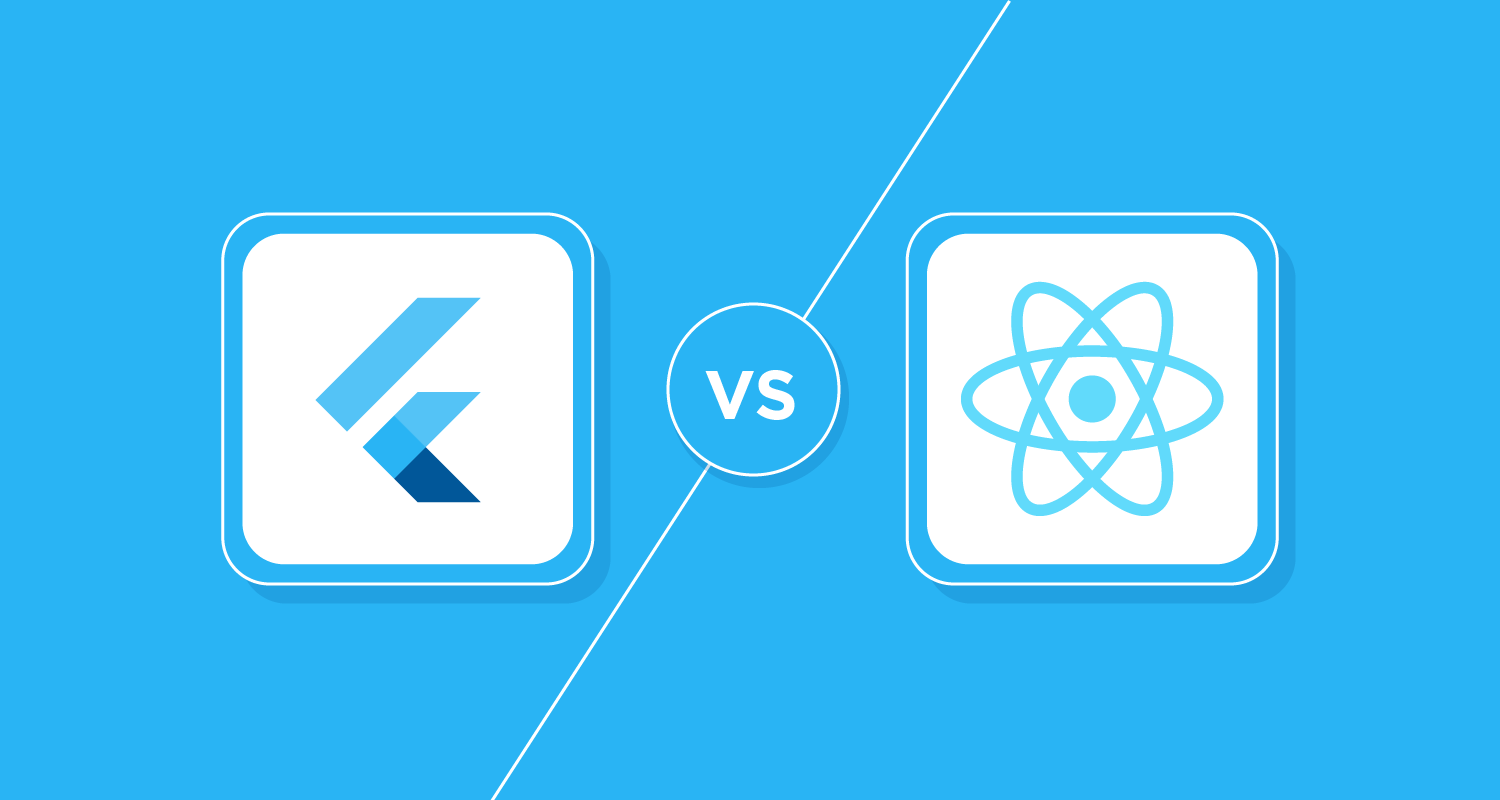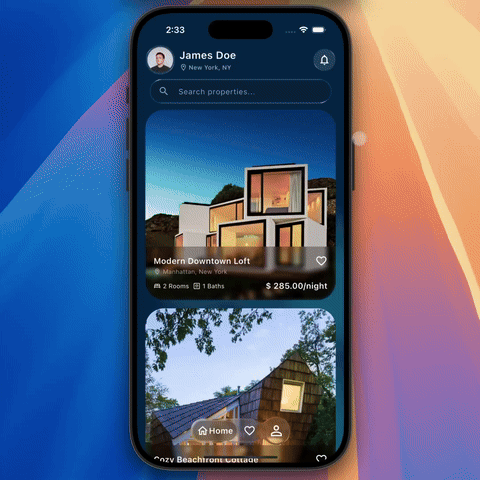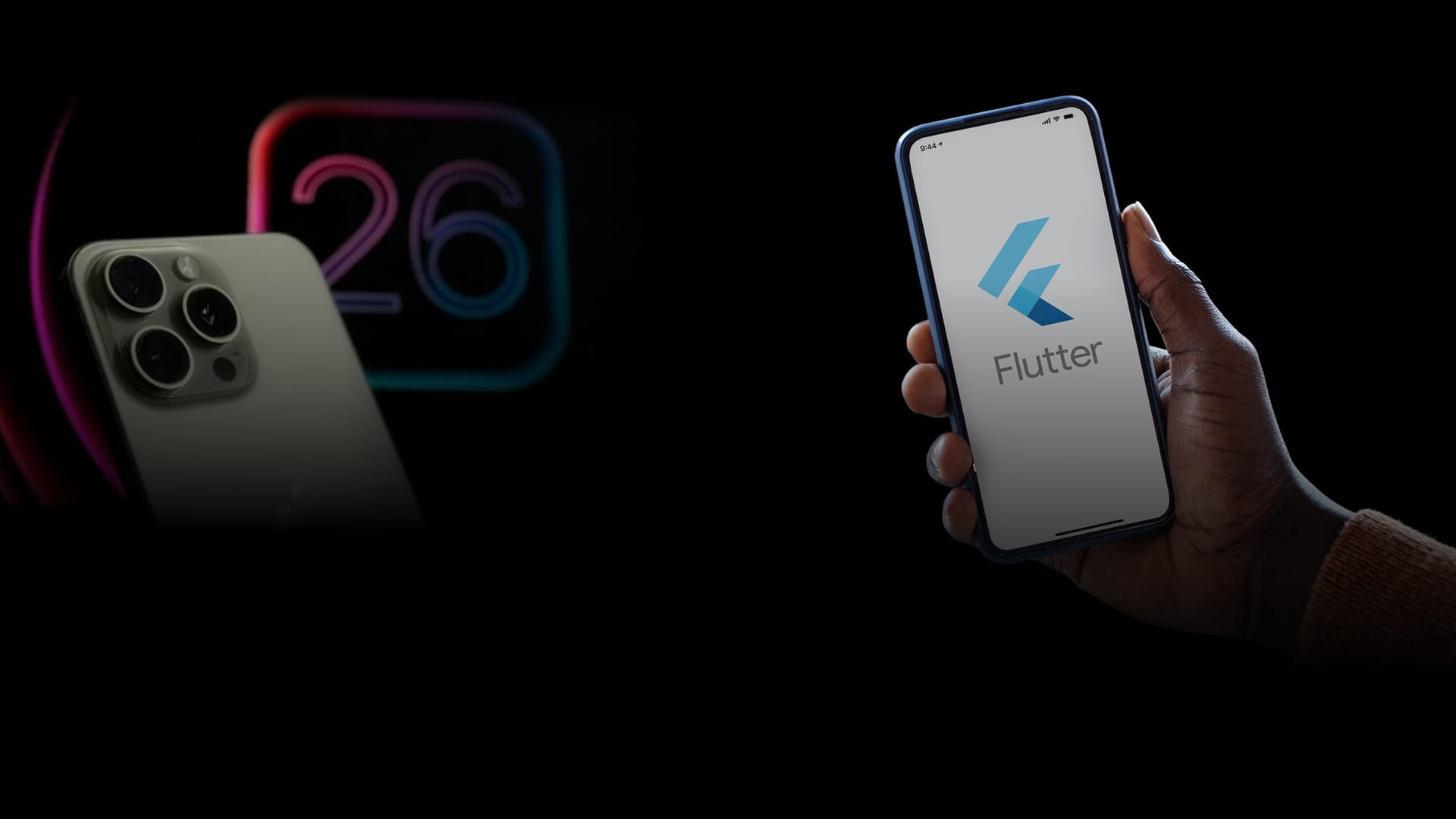Apple recently released the iOS 26 Developer Beta, introducing a stunning new "Liquid Glass" Control Center, parallax wallpapers, updated ringtones, and numerous UI refinements.
The new material, Liquid Glass, combines the optical qualities of glass with a fluidity only Apple can achieve, as it transforms depending on the content or context.
As usual, the same reaction echoed across the Flutter community. Some of these reactions are presented with headings like:
iOS 26's Liquid Glass just killed Flutter
React Native already supports Liquid Glass — Flutter is dead!
Apple’s iOS 26 Just Changed for Cross-Platform
React Native apps look more native than ever. Why is my Flutter app sticking out?
In this blog, we will discuss some technical aspects of what is happening with Flutter after the release of iOS 26. Let’s take a calm, developer-first look at the situation and determine if it's a genuine cause for concern or if this is just another round of Flutter bashing.
What iOS 26 Actually Changes
The iOS 26 Beta introduces deeply native UI features:
- A Liquid Glass Control Center with complex blur + transparency shaders
- Parallax & dynamic wallpapers
- Enhanced accessibility options (contrast, motion toggles)
- UI updates to Safari, Wallet, and other system apps

These are native-layer changes in UIKit/SwiftUI — not trivial to replicate.
Where Flutter Struggles to Keep Up with this update
On different platforms like GitHub, Reddit developers admit this:
Matching iOS 26’s new aesthetic in Flutter will require manual UI rework —especially for transparency, blur, and motion effects. The effort is real, but far from impossible.
🪧 The Real Issue: Support of iOS 26 changes
The core of the concern lies in GitHub issue #170310, where devs are requesting the Flutter team to:
- Support for iOS 26 “Liquid Glass” Design in Cupertino Widgets
- Add Cupertino Native-style blur/shader enhancements
- Explore native layer interop with Skia
The post has hundreds of upvotes and active engagement. Some community comments:
"Flutter won't directly support iOS 26 Liquid Glass or M3 Expressive soon. It needs to revisit its architecture."
🔄 Why Are People Saying “Switch to React Native”?
Because React Native uses actual native views, it automatically inherits Apple’s UI changes. So when Apple updates UIKit:
- React Native instantly gets Liquid Glass UI
- No need to rebuild or mimic with shaders or canvas work
Now let's discuss what happened behind the scenes of Flutter and React Native
🎨 Flutter vs React Native: Rendering Approach
Flutter is independent of a platform’s native UI components. Instead of using standard OS elements, it relies on its own rendering engine, Skia, to draw every pixel manually on the screen — treating the display as a blank canvas.
Because Flutter does not inherit native UI behavior, even Cupertino-style widgets (which mimic iOS components) are not truly native. This means they do not automatically adopt the latest design changes introduced in iOS.
As a result, when Apple releases major visual updates — like the Liquid Glass effect introduced in iOS 26 — Flutter apps won’t reflect those changes by default. Developers must wait for the Flutter team to explicitly acknowledge, accept, and implement those new design elements (see Flutter bug #170310).
Until then, some Flutter widgets on iOS 26 and newer may appear outdated or inconsistent with native apps.

React Native works differently from Flutter.
It is based on actual native UI components on iOS, This implies it renders components using iOS's native UIKit views. As a result, an OS-level UI change or updates, such as Liquid Glass, are automatically inherited without any additional development effort.
However, relying on native components can also introduce trade-offs. It may lead to performance limitations or inconsistencies across platforms, especially when trying to maintain a uniform UI/UX between iOS and Android.
So, certainly, a Flutter app will not instantly support the Liquid Glass UI and other UI changes. But this doesn't imply that Flutter is dead or has no future?
🚀 Why Flutter Is Still Ahead
Let’s look at the broader picture.
1. Community-led solutions already exist
Check out open-source solutions that simulate:
- Blurred backgrounds using BackdropFilter
- Parallax effects with shader libraries
- Dynamic theming using
MediaQueryandPlatformDispatcher
Some packages are getting ready to match the Liquid Glass UI liquid_glass_renderer , liquid_glass, perfect_liquid_glass. Some early demos replicate the Liquid Glass look with minimal code. Others offer packages like flutter_blur, glassmorphism_widgets, and flutter_shaders.

3. The Flutter team is actively watching
From responses on GitHub and Flutter Dev X (Twitter), it’s clear this isn’t being ignored. Whether it ends up in stable builds or as new Cupertino widgets, Flutter’s core team knows iOS 26 isn’t "just another update". The arrival of major updates for both Material and Cupertino presents a significant and exciting opportunity to apply past lessons and reconsider the long-term architecture for design system integration in Flutter.

3. Full UI Control
Flutter doesn’t rely on UIKit or SwiftUI. Your app renders identically on Android, iOS, web, and desktop.
This means:
- iOS 26 won't break your layout
- Your custom design system still looks and behaves the same
- UI glitches from native updates? Not your problem
🌐 But What About Perception?
Let’s be real — for many developers (especially iOS-first ones), not matching the latest native UI means the app feels old.
That's fair. Apple users are picky. But:
- Native SwiftUI apps also take months to adopt new iOS paradigms
- Flutter gives you full control to replicate or ignore them
- You can version UI logic just like APIs
Flutter doesn't fall behind Apple. It prioritizes consistency across platforms. That’s the tradeoff.
Community Poll: What Devs Think
- Nearly half the respondents (47.8%) think it’s not the end for Flutter.
- Some believe it’ll be cloned, and others argue that users/devs simply don’t care about native-perfect UI replications.
Does liquid glass in iOS 26 make Flutter obsolete?
— Aaron Grider (@aarongrider) June 13, 2025
✅ TL;DR
| Myth | Reality |
|---|---|
| Flutter doesn't support iOS 26 | Not out of the box, but you can implement it using third party libraries or by using official libraries like flutter_blur and flutter_shaders |
| Apple killed Flutter again | Nope. Flutter is platform-agnostic and stable |
| Native is the only way forward | Only if you’re willing to rewrite 3x the code |
Final Thoughts
Flutter doesn’t instantly match Apple’s aesthetic — and that’s fine.
Instead of chasing Apple’s UI every June, it offers:
- Visual consistency across platforms
- No unexpected breakages from OS updates
- Freedom to match or ignore trends, based on your product’s needs
So, Flutter isn’t dying.
It’s evolving — again.
Resources
Let's keep Flutter growing — together.

